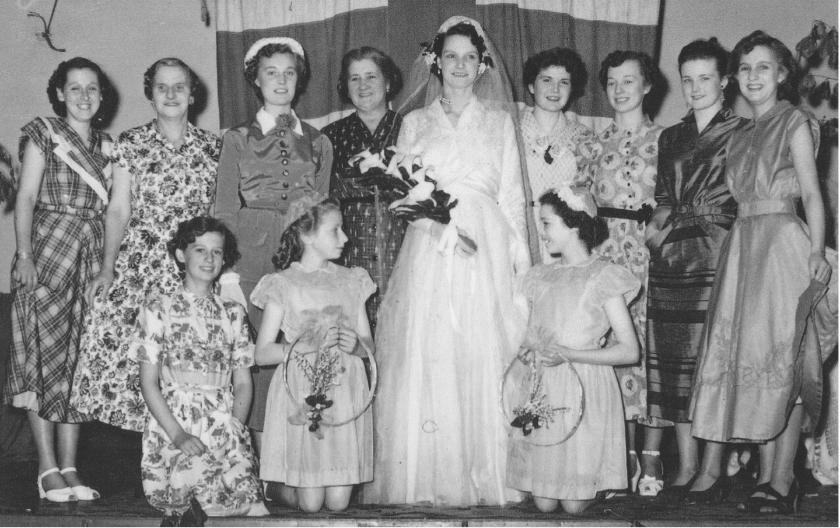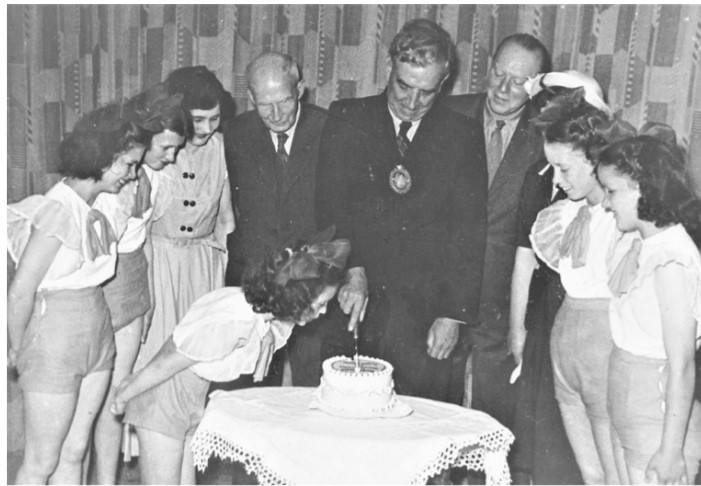Following this are memories from: Margaret Hawkins, Lot Sutcliffe, Ernie Smerdon, Margaret Ledbury and Mary Reeves, Pat Blayney, and June Labdon.
From Hugh Abbott:
'Harold Abbot was at Lyndhurst first * He came from Bowdley Farm.
Lyndhurst was
left by Harold to his daughter Margaret, but it was effectively in the
hands of her three daughters, Frances, Pamela and Ann. Incidentally,
Margaret married a Perryman, a farmer at Yeo Farm: he was the second in
Devon to have electricity, the first being Drogo Castle. **
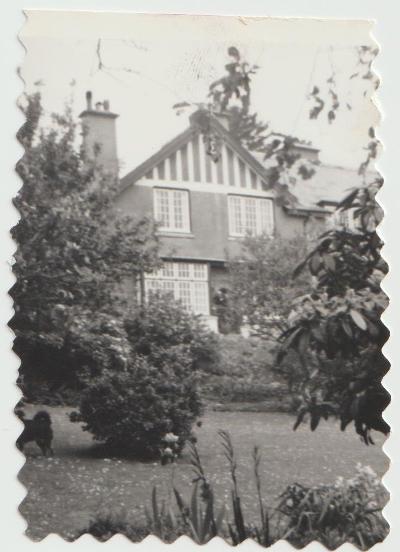
Francis William Smerdon (Frankie) Abbott, my father, lived at Lyndhurst. The building opposite the house was stabling for a horse and carriage. There was a kitchen and scullery, with a larder and a copper. I remember huge bowls being hung on the back wall. We had a piano in one room, and a grandfather clock in the hall. There was a bathroom upstairs, but the hot water had to be carried up for it in large watering cans with lids.
I heard a story that the bottom newel posts in the hall had, at one time, glass globes on them, like upside down fish bowls. One day the sun shone through the hall door and through a globe which acted like a magnifying glass. It caught the stairs alight.
Frankie owned Rew Lea Cottages, and eventually moved to Woodawray. My grandmother lived with us. There were evacuees in the house during the war - my mother used one of the bedrooms as a food store, and had food piled from floor to ceiling. Frankie was a Special Policeman at this time.
I remember someone called Roberts at Cartlands - he had Raj connections. Miss Manlove was at Moorlawn. Colonel Rendell was at Torns - the hunt met there.
A Nosworthy ran the newsagents - I think Harold's wife was a Nosworthy.*** There was some connection with the Langler family, who owned what became Webbers and Christophers' yard.
The three daughters then sold Lyndhurst to a couple from the Belgrave Hotel'.
*William Henry Abbott, first owner on the deeds. In the Devon Kelly's Directory for 1914
** Wallace John Perryman married Alice Margaret Abbott 30 Dec 1919, Ashburton. (Western Times 3 Jan 1919 p 4 col 5)
***William Henry Abbott married Alice Nosworthy Rowe 18 Apr 1892 (Silver wedding reported in Western Times 20 Apr 1917 p4 col 4)
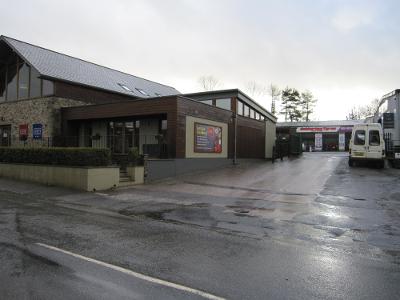
With many thanks to Lot; also to Judy Marshall, of Around Ashburton, www.aroundashburton.co.uk who first published Lot's account.
*******
From Ernie Smerdon:
I lived at 69 North Street – my mother was born in the houses opposite (now demolished – these were where the strip of pavement is now). The Routley family lived in no. 92, and the Wottons in 94. Going back the other way The Gill family were in no. 90 and the Endacotts in 88.
Our house was large – we had 6 bedrooms. F J Badcock had lived in it once, and still owned it.* During the war, when we had evacuees, there were 14 in the house altogether.
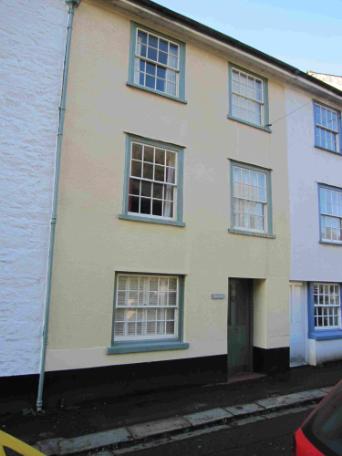
69 North St today
We used to pick flowers and berries and sell them house to house. First of all in the year it was snowdrops, then daffodils from Lent Hill and primroses from Goosible Lane (sp?)** Later in the year we collected 'urts and chestnuts. Bluebells were no good for selling – they didn't last.
I used to save with post office savings stamps – they were 6d a time.
In those days it was considered OK to have a birds' egg collection – I made a box for mine in school.
Shiner Shelton*** married one of the Leaman girls. He was a barber at 2 North St, and then later at 40 North St. He used to ask us teenagers 'Anything for the weekend ?' We hadn't a clue what he was talking about.
Smerdon's was at no 4 North Street.
The Co-op occupied several buildings – the drapery shop was at 8 North Street, (this later became the pet shop) and the bakery was at no 30. The Co-op butchers was next to it, and the main grocery department was opposite at number 19.
Minnie and Mabel Butler had a haberdashery shop at 14 North Street – one of them used to give piano lessons upstairs.
Mr Mann had an accumulator shop at 4 West Street, and a shop across the road at 3 West Street. Accumulators were used for running radios – they were made of glass, and you could see when the acid was going down. You then took them into Mr Mann and exchanged them for a new one.
Mrs Sly was the Sunday school teacher – she lived in a big house opposite the church. Her parents had had a dairy. Dickie Jones was the choirmaster until Maureen Daymond came in 1954 or 55 – he was the husband of Amy Jones.
Miss Hern lived in a large house just beyond the bridge at the end of Chuley Road. The house was at the bottom of a steep valley, which got filled in when the A38 dual carriageway was built. The house had oil lamps - no electricity. She had an orchard with cider apples, and a large cider press in the barn. We boys used to 'scrump' the cider apples, even though they were horrible.
In those days the quarry excavated black marble - it was quite famous. There is some at the South Dartmoor Community College.
*Frank Jackson Badcock, 'Builder, contractor, timber merchant, quarry owner and haulage contractor - Station Road'
Kelly's Directory of Devonshire 1935
** Goosepool Lane on the 1840 tithe map.
*** Bill Shelton married Rhona Leaman. Thanks to Linda Phillips for this information.
Many thanks to Ernie Smerdon
*******
1945 - 1962
My sister Margaret and I arrived in Ashburton at Easter 1945. We came straight from boarding school to the Vicarage, our new home; our parents had moved from North Devon while we were away. We were thrilled with the lovely Queen Anne house with its large garden, lots of room for us to play outside and a large bedroom each. We were 11 years old and had spent the first years of our life in a small village, so this was an amazing change. Ashburton was a small market town but it seemed quite a large one to us. Just a few thousand people lived there then, and much more traffic going through than we had known. There were four main streets with a Bull Ring at the crossroads,a large stone edifice with large iron rings set into it on all sides. It was very old, and presumably used to tether bulls during the cattle markets, for sale or for hire maybe. There was also a Pannier Market, with many stalls or stone shelters where people would come into the town to sell their wares. I remember a Medieval Fair one year when we all dressed up and processed to the Market and sold the contents at our various stalls. Margaret and I dressed up as nuns and helped at a Church stall, my sister sold a lot of tiles she had painted with Saints and Canterbury Pilgrims! Many years later, long after we had left, it was removed for a large car park, much needed for a rapidly enlarging town. West Street, where we lived, went out towards Plymouth, East Street met at the Bull Ring and continued on to the Exeter Road. Across from these was North Street, leading up to the moor and the Ashburton marble quarry. Last was St Lawrence Lane leading down to the Cattle Market and the Railway Station. In that street there was an old building which once had been a Grammar School but in our time was a Junior School and the Library. The older children went by train to Totnes to the school there.. This Lane became flooded very quickly in torrential rain and the owners of the town houses there all had flood boards,to insert in front of their doors to prevent the water entering their house!
The town had a Portreeve instead of a Mayor, and was appointed every few years, with an inaugural procession up to the Town Hall and every year there was a Portreeve's Dinner.
In the summer we danced in the streets a floral dance with a band playing and we danced a folk dance to a particular tune. We noticed that we lost some dancers as we approached a pub and there were quite a few of those on our route--but they returned later!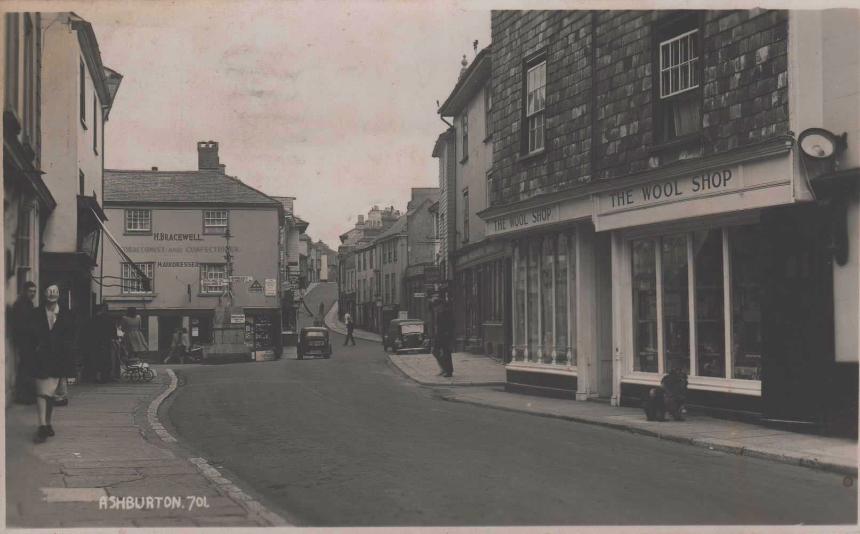
From my own collection.
There were several shops, owned by the people in them who were so friendly, we knew them well. The Misses Butler, two lovely, smiley ladies owned the wool shop with lots of millinery items and their beloved cats were often on the counter. They were Sacristans at our Church and also ran the Sunday School. There were about 100 children who came every Sunday to the Church Hall and were given a little book to put a sticker in ( appropriate for the lesson they were taught.) We went of course and it was rather enjoyable. Every year they all went in a bus for the Sunday School outing to Teignmouth with 6d to spend! Also there was a Sunday School tea, lots of food such as large buns with cream and jam and many different kinds of cake with squash, a great treat for us all. Then each child was given a Sunday School prize, a book for them to take home. I’m sure most of the food was provided by the large bakery, Barnes, all cooked on the premises.
From Pat Blayney:
In those days, there was a burnt down mansion near Greenside, and the grounds there were a haven for us to play in.**
Upon leaving Ashburton High School/Greylands, I worked at H.B. Cook Hairdresser, where I served an apprenticeship. I worked there for just over three years and then emigrated to Canada with my mother.
